Hasselt is a small Belgian city so clean and quiet i wouldn’t want to be stuck there for more than 4 hours. Yet i’ve visited it again and again these past couple of years. They have one of the most interesting art centers in this part of Europe. Located in a former beguinage, Arts centre Z33 explores the fringes between contemporary plastic arts and design by creating exhibition projects that draw attention to social developments and scientific phenomena.
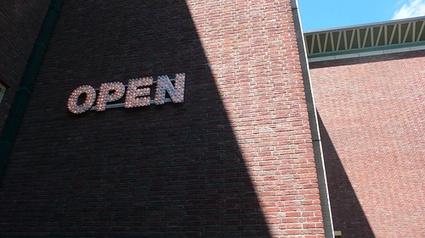
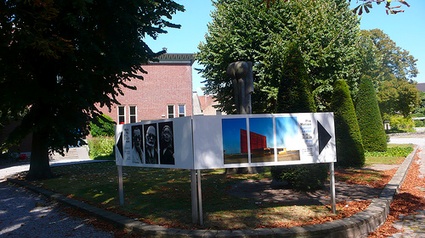
The current exhibition, Work Now, wishes to reflect upon the concept and meaning of ‘work’ in today’s society. Whether we live in a time of crisis or economic growth, work does not only take most of our available time, it often takes an important role in the way we define our sense of identity. The (art)works in ‘Work Now’ throw light, or simply invite to reflect, on issues such as flexibility, mobility, motivation, significance, and the work-life balance.
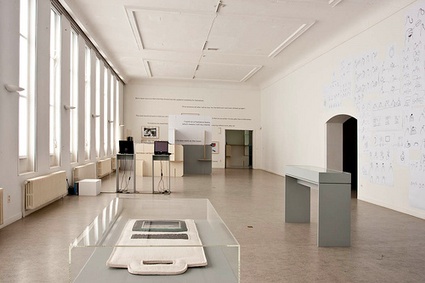 View of the exhibitions space. Photo: Kristof Vrancken for Z33
View of the exhibitions space. Photo: Kristof Vrancken for Z33
The exhibition features many names you’ve probably heard about before in these pages and elsewhere. There’s Santiago Sierra, Aaron Koblin, Molleindustria, Dan Perjovschi, Artur Zmijewski, Marti Guixe, Hella Jongerius, Atelier Van Lieshout, etc. But i also discovered exciting artists.
Well, one at least. The work of Helmut Stallaerts only made it worth the trip to Hasselt.
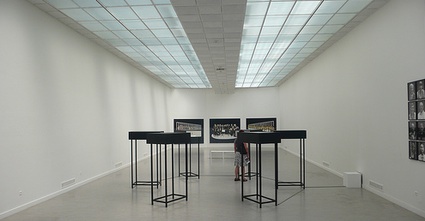 Helmut Stallaerts, Pan- optic, 2007
Helmut Stallaerts, Pan- optic, 2007
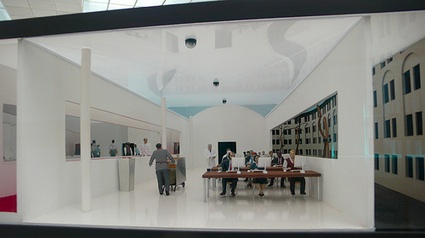 Helmut Stallaerts, Pan- optic, 2007 (detail of the installation)
Helmut Stallaerts, Pan- optic, 2007 (detail of the installation)
In Hasselt, Helmut Stallaerts was showing the Prophecy triptych as well as a stunning Pan-Optic installation with a complex and intriguing imagery. The Pan-Optic features scenes inhabited by tiny figurines that look like the ones architects use on their models to show the scale of a building. Except that in Stallaerts’ construction, the figurines have been given a detailed face and clothing that give them a personality. The scenes they are involved in seem easy to identify: a working office, a stiff business meeting, an encounter in the woods, etc. Except that something in the atmosphere keeps them aloof and mysterious. The models are also portrayed in close-up on the twenty-eight b&w photos that do nothing to clear the plot for visitors.
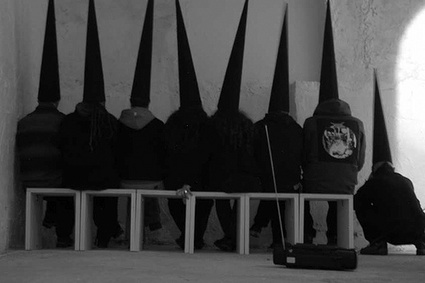 Santiago Sierra, The Anarchists, 2006 (video still)
Santiago Sierra, The Anarchists, 2006 (video still)
Santiago Sierra‘s video The Anarchists questioned the relationship between motivation and work. The artist invited eight young militant anarchists to face a blank wall and listen to the traditional Christmas mass celebrated by the Pope on December 25th, 2006, wearing a black capirote. The pointy hat was used during the Spanish inquisition, where the condemned person would be forced to wear one and be put under public humiliation. The anarchists were each paid 100 euro.
The artist’s work has often explored in a subversive way issues dealing with capitalism, the structure of labour market, and exploitation. The Anarchists is one of many artworks that saw Sierra pay people to do pretty absurd things. For 160 CM Line Tattooed on 4 People (2000), he gave a syringe of heroin to four drug-addicted prostitutes who accepted to have a line tattooed on their backs in exchange. A few months later, he artist paid 10 Cubans $20 each to masturbate in front of his camera. In 2004, he hired ten Iraqi immigrants, aligned them in an art gallery and sprayed on their backs with polyurethane then waited for it to harden. There’s more to be scandalized about in this TateShots video:
The demand for mobility and worker’s flexibility is a general parameter that has come to characterize the organisation of labour since the middle of the seventies. The parameter has started to be come under severe pressure since the onset of the current crisis. Whether the crisis is severe enough to initiate a re-evaluation of this model remains yet to be seen. What is certain is that when this occurs, and another model presents itself, the effects will also be felt at the level of work organisation.

In The Sheep Market, Aaron Koblin plays with and investigates the Amazon.com’s Mechanical Turk, a crowdsourcing service that enables computer programs to harness the brain of people who have nothing better to do in order to perform tasks which computers are unable to do. Taking its cue from Antoine de Saint-Exupéry’s book The Little Prince, Koblin offered 2 dollar cents to any web user in exchange of the drawing of a sheep facing to the left. The result is mesmerizing: 10, 000 sheep, each different from the other. The sheep drawers were pretty upset when the artist told them he was going to sell the drawings.
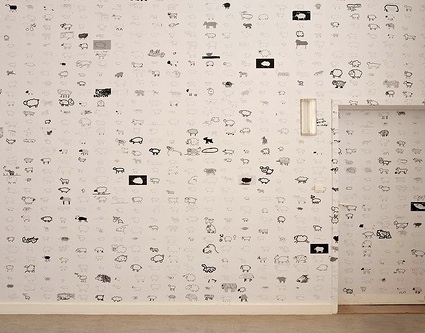 Aaron Koblin, The Sheep Market. Photo: Kristof Vrancken
Aaron Koblin, The Sheep Market. Photo: Kristof Vrancken
Performing tasks through ‘Mechanical Turk’ no longer implies a (job) function, but only the execution of isolated tasks; tasks which are difficult for a computer but simple enough for a broad audience. Technology-assisted flexibility turned upside down.
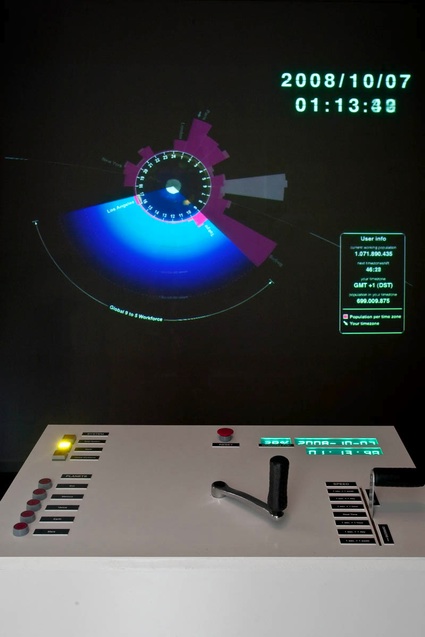 Theo Deutinger, World at Work. Photo: Kristof Vrancken
Theo Deutinger, World at Work. Photo: Kristof Vrancken
World At Work by Theo Deutinger (a pretty interesting architect and info graphic designer) is a worldclock that represent worldwide working patterns. Because our day/night rhythm is based on the natural course of the Earth, the central elements of the clock are the orbit and rotation of our planet. The clock shows the times on which different parts of the world population are working, sleeping or enjoying leisure time. By taking the working day from nine to five as the point of departure, the clock reveals the unbalanced division of labor between the various time zones on our planet. At the least busy time only 2% of the world’s population is at work, while at the busiest time a staggering 80% toil away. While most of the world population is sleeping, the Americas are at work. When they go home from work, the workforce of Asia wakes up and heads to their jobs. When Europe and Africa join later, 3/4 of the world population are busy earning a living.
The work takes the form of a website and an installation that enable visitor to manipulate the world clock by means of a control panel.
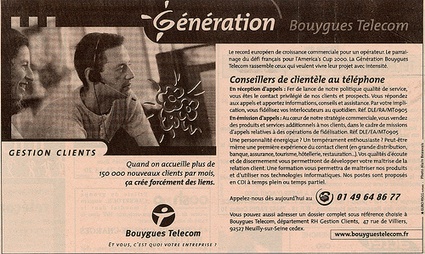 Julien Prévieux, Lettres de non-motivation, ongoing
Julien Prévieux, Lettres de non-motivation, ongoing
Julien Prévieux‘s ongoing series of Lettres de non-motivation /Uncovering Letters make me laugh out loud. Prévieux responded to authentic job openings in the newspaper by submitting a cover letter in which he explains in great length why he has no interest in the vacant position. Pretending the offers were meant for him, he writes the company he is not interested in the ridiculously low wages they offer, derides the appalling layout of the job ad, warns them he has no intention to be polite to clients or tell them his best asset is his skate-boarding skills. There’s a translation of one of his letters over here. Amusingly, Human Resources employees either send them the usual polite answer (“despite your evident competence, we are sorry to blablabla”) or take Prévieux letter seriously and send him an answer that betrays how offended they are by Prévieux’ sincerity. The job offer, the ‘uncovering’ letter and the reply are shown as a triptych. Behind the facetious character of each letter, one can read a real and acute critique of business recruitment procedures and more generally, the way some corporations and other employers take advantage of the context of general underemployment in France.
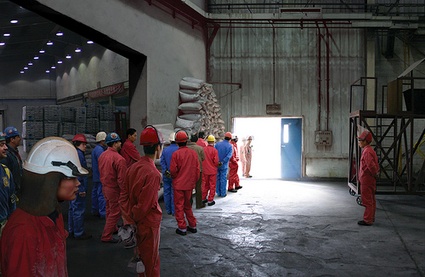 Nancy Davenport, Workers (leaving the factory), 2007 (video stills), image courtesy of Nicole Klagsbrun Gallery
Nancy Davenport, Workers (leaving the factory), 2007 (video stills), image courtesy of Nicole Klagsbrun Gallery
I made a picture set but Z33 has a much better images.
Work Now, an exhibition curated by Karen Verschooren, is on view until September 27 at Z33 in Hasselt, Belgium.
